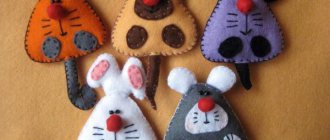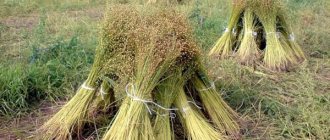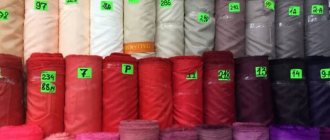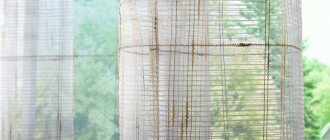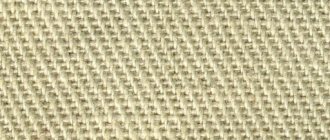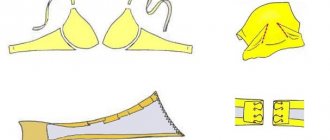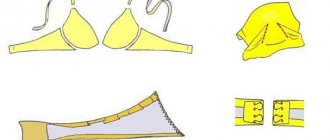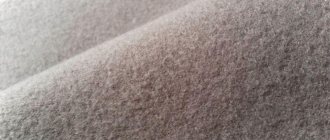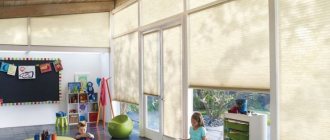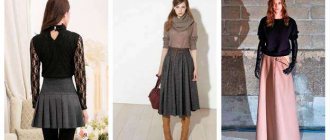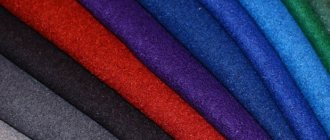Description of mesh fabrics
It is difficult to answer unequivocally what the mesh fabric is called. This is a group of materials for different purposes, united by structural features. The cellular texture allows the textile to pass air freely, making the product lighter, which contributes to additional comfort.
A typical representative of mesh fabric is tulle. Varying in hardness, it is used in tailoring and stage costumes. There are several types of mesh material, and each of them is used in the clothing industry.
A special feature of this group is the plain weave of fibers with a large gap between the weft and warp threads. Due to this method, cells (holes) are formed.
Polyester, polyamide, elastane, and viscose are used to create fabrics. The purpose and characteristics of the material depend on the type of raw material. Viscose makes the fabric soft and elastic, polyester and polyamide give rigidity and provide good dimensional stability. Dyeing and finishing of woven fabrics is carried out at the final stage of production.
Fatin
One of the most popular types of mesh is tulle. The fabric is made from polyester threads. The cell size is small, and the fabric density does not exceed 40 g/m².
According to the type of surface, tulle can be:
- matte and shiny;
- plain and colored;
- decorated with beads, embroidery, sequins, sequins, appliqués.
Advantages of the material:
- elasticity and dimensional stability;
- almost does not wrinkle, just holds volume and folds;
- allows air to pass through well.
White tulle Tulle is a very hard material and does not absorb moisture. If there are many layers of fabric (in a wedding skirt, for example), then breathability is greatly reduced.
The fabric is washed in warm water using a soft gel. Hand wash preferred. The water is allowed to drain, then the product is shaken, straightened and dried. Iron tulle using a humidifier or steam.
General characteristics of clothing nets
Fabric specifications may differ in certain parameters. The table below shows the general indicators of the group of mesh materials:
| Properties | Indicators |
| Raw material type | Synthetic, artificial |
| Fibers used | Polyester, viscose (up to 30%), polyester, lycra (up to 5%), lurex |
| Weave Type | Simple (linen) |
| Density, g/m2 | 35 – 270 |
| Standard fabric width, cm. | 150, 300 |
| Water resistance | Low |
| Hygroscopicity,% | 6 – 12 |
| Moisture absorption rate | Average |
| Air exchange | High |
Open to see the entire table
| Vapor permeability | Optimal |
| Electrification | Expressed |
| Side | Double-faced canvases |
| Drawing | Plain colored plain fabrics, printed, kmf |
| Manufacturer | China, Türkiye, Italy |
| Standardization | GOST 29223 – 91 |
| Price | Available, from 69 rub. for 1 meter |
Types of mesh for clothing
Expert opinion
Alyona
Fabric expert and technologist Alena Khlebnikova is ready to answer your questions.
Write to us
The types of materials differ not only in the size of the cell and its design, but also in terms of rigidity and composition. Depending on these parameters, the purpose of the mesh fabric is determined.
Chiffon is conventionally classified as mesh fabric. This is a transparent lightweight fabric with high air conductivity. Drapes well, but is capricious in sewing and cutting.
A relatively new textile is Air-mesh - a knitted fabric consisting of three layers. The material is based on polyester fibers. Used for the manufacture of tourist equipment and sportswear.
Neoprene mesh is also known. The size of its cells is minimal. The fabric is made from foam rubber, and wetsuits and swimsuits are sewn from it.
Stretch mesh
Stretch mesh fabric is a synthetic material with the addition of elastane fibers. It has high strength and long service life. Used in the manufacture of underwear and inserts in models of evening dresses and blouses. The translucent material hugs the body beautifully and is stretchable in one or two directions.
Mesh with rhinestones
The name of the fabric, like the mesh with rhinestones, depends on the base. It can be soft or medium hard tulle, stretch or lace. A distinctive feature is the presence of rhinestones. Decorative elements are most often attached using hot-melt adhesive, less often - sewn on. The fabric is used for sewing dance costumes and evening dresses.
False mesh
False mesh is a synthetic material made of polyester fibers that has a non-through cellular structure. This type imitates a mesh. Shows high elasticity. Used in sewing sportswear.
Mesh with beads
The mesh with beads is created similarly to the material decorated with rhinestones. The difference is that in this version the hot-melt adhesive method is not used. Beads or seed beads are sewn onto the fabric. The material is used in sewing elegant items and making accessories.
Tulle
The most famous and popular material in the mesh group is tulle. There are several varieties of this textile:
- soft. It is used as an independent fabric and as a companion. And also used as a lining. Airy fabric creates a feeling of lightness and adds femininity to the silhouette;
- medium hardness and hard tulle are used where it is necessary to create volume: for the manufacture of petticoats, tutus, interior decoration.
Tulle is a fabric consisting of 100% polyester. Corset types of mesh have high dimensional stability. Used in sewing corrective underwear.
Pleated mesh
They also produce pleated fabrics with a fine mesh texture. Due to the composition, the material holds its shape well. Used for sewing pleated products.
Shiny with glitter
Glitter on a mesh base is a fabric on the surface of which fine glitter is applied using an adhesive method, which does not wash out during washing.
Perforated mesh
Perforated mesh is used as a lining material for holiday and sports items. Openwork motifs are made during the fabrication process.
Large mesh
Large mesh - universal in composition and purpose. Differs in cell size. Depending on the composition and production method (woven and non-woven fabrics), it is used for the manufacture of protective inserts, linings, and accessories.
Mesh with pattern
Material with a print applied to the surface by printing is gaining popularity. It is used to make light curtains, children's elegant clothes, and ball gowns.
Embroidered mesh
Guipure is a mesh with embroidery. It is a soft canvas with high aesthetic characteristics. The pattern, made with matching or contrasting threads, looks voluminous. The material is used in sewing underwear, elegant clothes and decorating individual parts.
Sequins on mesh
This is one of the densest materials in the group. Sequins on the mesh are sewn on one or both sides of the fabric. This textile is used to make festive clothes and costumes for performances. Sequins create a play of light and look impressive. The disadvantage of this type is the high cost and difficulty in caring for the product.
Fatin
One of the most popular types of mesh is tulle. The fabric is made from polyester threads. The cell size is small, and the fabric density does not exceed 40 g/m².
According to the type of surface, tulle can be:
- matte and shiny;
- plain and colored;
- decorated with beads, embroidery, sequins, sequins, appliqués.
Advantages of the material:
- elasticity and dimensional stability;
- almost does not wrinkle, just holds volume and folds;
- allows air to pass through well.
White tulle
Tulle is a very hard material and does not absorb moisture. If there are many layers of fabric (in a wedding skirt, for example), then breathability is greatly reduced.
The fabric is washed in warm water using a soft gel. Hand wash preferred. The water is allowed to drain, then the product is shaken, straightened and dried. Iron tulle using a humidifier or steam.
Applying grids
Mesh dresses
The design of clothing models made from mesh materials depends on the degree of rigidity and elasticity. The following products are sewn from lightweight textiles with through holes:
- underwear, corsets;
- curtains and light curtains;
- interior decorative elements;
- skirts;
- elegant tunics and blouses;
- wedding, evening, children's holiday dresses;
- dance, stage, circus costumes;
- used for sewing lining in outerwear;
- jewelry and accessories;
- sports jerseys;
- camouflage nets.
Mesh textiles are used to make individual parts in sewing hats, bags, and backpacks. Less commonly used in the production of hosiery.
Colors
The range of lining materials is impressive. In the production of clothing, not only the standard shades of white, black and blue are used. Red, pink, yellow and light green fabrics are often used. Double-sided lining fabric is in fashion and serves as an excellent decoration for any outerwear. Many coats and suits began to be sewn using multi-colored linings and patterned materials. They add character and style to the look.
Recently, the lining and the main fabric may not match in color and may be contrasting.
Advantages and disadvantages
The advantages of the fabric include:
- ease;
- ease of care;
- low cost;
- the ability to implement design solutions;
- multifunctionality;
- elasticity;
- ability to hold shape and create volume;
- abrasion resistance;
- good air exchange;
- dries quickly;
- hygroscopicity.
The disadvantages include the following properties:
- complexity of tailoring;
- the fabric is unstable to mechanical damage and exposure to UV rays;
- May cause irritation on sensitive skin.
Tulle
A transparent and light type of mesh, sometimes with a pattern. The fabric is made on special tulle machines from cotton, silk and polyester are added. Patterned curtain tulle is used for sewing curtains for windows, as well as for finishing linen and women's dresses.
The material is named after the French city of Tulle, where it began to be produced. According to legend, in the 15th century, the future queen of France wished to have a cloth that would hide her face, but allow her to see everything. At the command of the king, the whim of the royal bride was exactly fulfilled.
Among the advantages of the fabric are:
- lightness and transparency;
- protects windows well from prying eyes and allows you to see what is happening outside;
- ease of care;
- affordable price.
White window tulle will have to be washed often. The matter is shaken free of dust and soaked in warm water with soft powder. Tulle is afraid of high temperatures and can become deformed and shrink. The material dries quickly and does not need ironing.
General recommendations for care
This group of materials is made from synthetic raw materials, sometimes with the addition of viscose and elastane. Such things are easy to care for. But the manufacturer's recommendations must be taken into account.
Wash items separately from others at a temperature of 30 - 40 degrees. For white fabrics, bleaching is acceptable. Wring out carefully, especially for materials with sequins, beads, and rhinestones. For pleated items, spinning is not allowed.
Iron the product from the wrong side at minimum heat settings. You can't steam!
It is advisable to store clothes in covers.
For evening and stage outfits with a lot of decor, as well as for heavily soiled items, dry cleaning is acceptable.
Theoretical paint volume
The theoretical volume of ink is calculated per 1 m2 of mesh and is used to determine the thickness of the ink layer obtained during printing, as well as to calculate the amount of ink required for printing a run. The theoretical volume determines the thickness of the paint layer, and the lower the mesh lineature, the greater it is. That is, fine meshes with high numbers transfer less ink or varnish to the print than coarse meshes with low numbers. The mesh we chose for the example has a theoretical paint volume of 7 cm3/m2. This mesh allows the application of very thin layers of paints and varnishes and is best suited for raster full-color printing with UV inks.
After the information about the thickness of the threads, we see two letter values: Y and PW. They inform us about the color of the mesh and its weave. Y is the first letter of the word YELLOW and it means, of course, that this grid is yellow.
